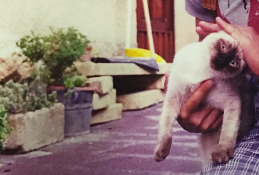zehner21
Member
Hi!
I'm having some problems trying to print from color negatives.
I have acquired a Jobo CPA which helps me to keep the temperature steady and does all the manual work for me (before the Jobo, I used a Cibachrome Drum).
However, my prints display some sort of cyan/blue/purple poison and I don't know why.
Usually, these patches appear near the darkest points of the photo however sometimes they appear in the upper section of the print.
I thought that, maybe, when they appear on the upper section of the photo this may be due to how much badly I insert the paper inside the drum but for the other case?
Chemistry has been mixed two days ago, using 10/2014 concentrates stored inside a frige. Paper is from 12/2014, also stored in a fridge.
Maybe the paper is old, or the concentrates went bad?
I remember that, when mixing the RA-4 developer, its color went from dark blue to a slightly pale yellow and this mutation happened also when I poured the 5 liters in to 5 glass bottles of 1 liter of capacity and also from a glass bottle to a Jobo plastic container.
Paper also seems to react too much faster to the changing in filtration: 10 units of yellow can turn a reddish print in to a very cool one.
-------------------------
Some additions:
I thought it could be chemical contamination, however I emptied and washed all the glass bottles before pouring the new solution. I also used the smell to determine which bottle was used for developer and which one for blix (this because some smell remained in the cap). Do contaminated solutions change in colour? If yes, there has not been any contamination (developer goes from pale yellow to dirty yellow).
To be noted, also, that with a starting filtration of M50Y50, the print was very red
I also thought about overdeveloping. Is this possible? I do a fully minute of developing/blixing and THEN I pour out the solutions. Unexposed edges are solid black, but I see a cyan/blue halo near them; this halo softens a lot when looked with a strong light. (it seems to disappear)
-------------------------------


Thanks
I'm having some problems trying to print from color negatives.
I have acquired a Jobo CPA which helps me to keep the temperature steady and does all the manual work for me (before the Jobo, I used a Cibachrome Drum).
However, my prints display some sort of cyan/blue/purple poison and I don't know why.
Usually, these patches appear near the darkest points of the photo however sometimes they appear in the upper section of the print.
I thought that, maybe, when they appear on the upper section of the photo this may be due to how much badly I insert the paper inside the drum but for the other case?
Chemistry has been mixed two days ago, using 10/2014 concentrates stored inside a frige. Paper is from 12/2014, also stored in a fridge.
Maybe the paper is old, or the concentrates went bad?
I remember that, when mixing the RA-4 developer, its color went from dark blue to a slightly pale yellow and this mutation happened also when I poured the 5 liters in to 5 glass bottles of 1 liter of capacity and also from a glass bottle to a Jobo plastic container.
Paper also seems to react too much faster to the changing in filtration: 10 units of yellow can turn a reddish print in to a very cool one.
-------------------------
Some additions:
I thought it could be chemical contamination, however I emptied and washed all the glass bottles before pouring the new solution. I also used the smell to determine which bottle was used for developer and which one for blix (this because some smell remained in the cap). Do contaminated solutions change in colour? If yes, there has not been any contamination (developer goes from pale yellow to dirty yellow).
To be noted, also, that with a starting filtration of M50Y50, the print was very red
I also thought about overdeveloping. Is this possible? I do a fully minute of developing/blixing and THEN I pour out the solutions. Unexposed edges are solid black, but I see a cyan/blue halo near them; this halo softens a lot when looked with a strong light. (it seems to disappear)
-------------------------------


Thanks
Attachments
Last edited:











